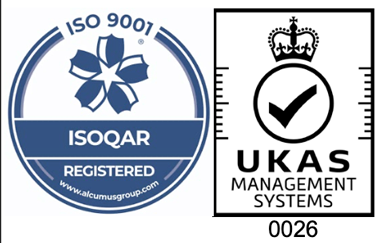A Guide to EPDM Rubber
26th October, 2022
In this guide, we are taking a closer look at EPDM rubber. Keep reading to find out more about this material, including the properties of EPDM and its common applications.
Ethylene Propylene Diene Monomer, or EPDM as it is more commonly known, is a synthetic rubber compound that consists primarily of ethylene, propylene, and diene. The diene monomers only form a small amount of the EPDM composition, and it is added as it allows for the curing of rubber with sulphur; this in turn alters the chemical structure to that of an unsaturated polymer. The addition of the diene monomers is what provides this rubber with high resilience, flexibility, and durability.
At Aquaseal Rubber, we use EPDM synthetic rubber compounds for a number of general and specialty outdoor applications, including steam hoses, electrical insulation, high temperature-resistant seals, roll covers, and more.
EPDM Rubber Properties
EPDM rubber has a number of beneficial properties including a wide temperature range and environmental, steam, chemicals, and abrasions resistance, making it a suitable material option for a wide range of uses.
Large temperature range
The temperature range of EPDM rubber ranges from -30°C to 140°C (150°C intermittent), which makes it a suitable choice when the application will involve extreme temperatures.
Steam Resistance
In addition to withstanding a range of temperatures, EPDM is highly resistant to steam, retaining integrity throughout extended periods of exposure.
Environmentally stable
EPDM is commonly used for outdoor applications as extreme weather conditions to not affect performance, with sunlight and UV not impacting the material.
Chemical Resistance
EPDM is resistant to a number of chemicals, including dilute acids, ketones, and alkalis. However, it is not suitable for use in applications where the material will come into contact with should not be with solvents or aromatic hydrocarbons, as they can result in a chemical reaction.
Abrasion Resistance
EPDM is a highly durable material, and unlike a number of other rubber materials, it is both abrasion resistance and tear resistance, making it suitable for a range of dynamic applications.
What is EPDM Rubber Used For?
As previously mentioned, EPDM is commonly used for applications that are outdoor, as it can continue to perform at an optimal level in extreme weather conditions, withstanding freezing temperatures, high temperatures, and exposure to ozone and UV. Outdoor application of EPDM rubber include roofing, window, and door seals, for tubing in solar panel heat collectors and for steam hoses.
Some of the most common uses of EPDM include in solar panel heat collectors, as tubing, for electrical insulation and, of course, in o rings.
How Long Does EPDM Last?
Whist the durability of EPDM will vary based on the application, exposure conditions and maintenance, it typically lasts for at least twenty years, as rubber naturally deteriorates over time. Find out about how long rubber lasts, and the ways in which you can prolong the lifespan of rubber here.
EPDM Products We Offer
At Aquaseal, we provide a wide number of products in EPDM rubber, including:
- Seals
- Sheeting
- Hose and tubing
- Sponge and Foam
- Extrusions
- D Fenders
- Marine rubber
- Food grade rubber
- Gaskets
- Fabrications
- Moulding
At Aquaseal Rubber, we also provide bespoke services, an example of which can be seen in the following case study, where our team designed and manufactured a watertight hatch seal and EPDM rubber section for a ship that was docked in our local Blyth port.
If you are unable to find the EPDM product that your project needs, then be sure to contact our team directly to discuss your requirements with our rubber specialists.


